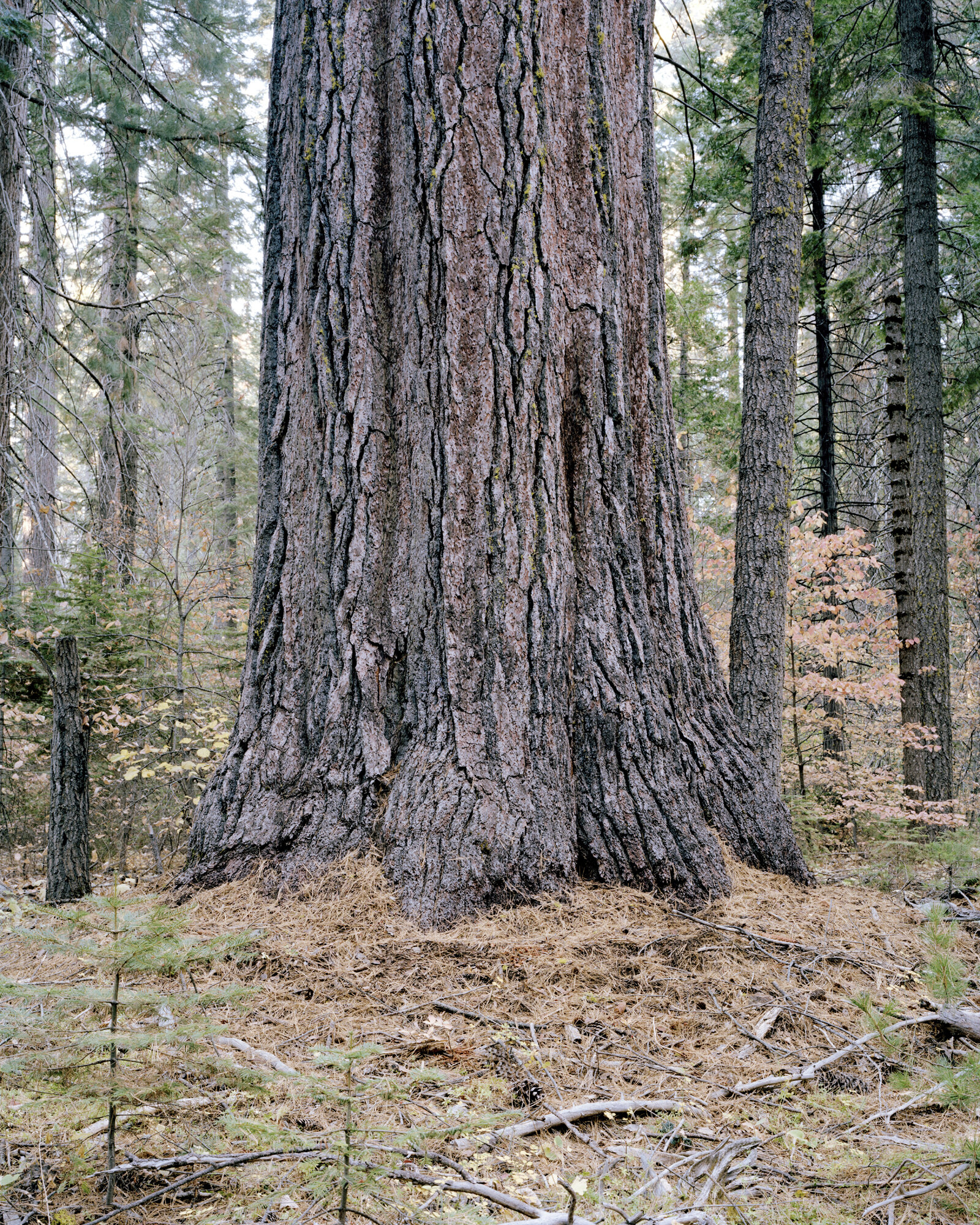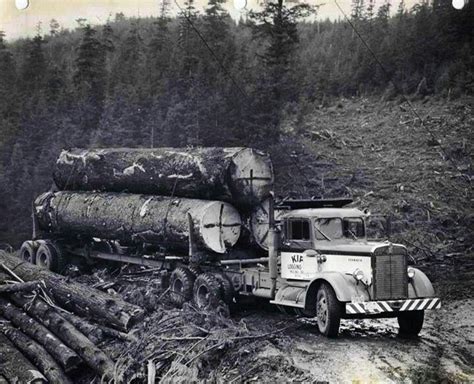Sugar Logging
Fall of 1976
My career in ‘woods work’ began in the Fall of 1976, at 22 years old. The most memorable experience, and initiation to forest labor, was logging the ‘Crabtree’ in Sonora County, California.

The Crabtree drainage was a protected watershed bisected by a major creek, which ultimately emptied into the Stanislaus River. The Crabtree drainage hosted forest primeval, untouched by man; likely too remote and steep to harvest during Gold Rush Days or during western railroad expansion. The forest of towering conifers consisted of mixed growth species: virtually un-tapered Douglas Fir rising two hundred feet, gigantic golden Ponderosa Pine, Hemlock and White Fir, Western Red Cedar, plus queen of the forest, the magnificent rust colored Sugar Pine.
Despite my young age, and complete absence of timber harvesting experience, I was keenly aware that my ‘logging show’ was unique, perhaps a once-in-a-lifetime experience. Indeed, it was.
My work was mop-up. Crabtree was sensitive high ground, perhaps 7,000 feet elevation, with a vigorous ecosystem. The Forest Service undertook a fair effort, committing personnel and scientific resources toward protecting the watershed, while still harvesting the significant timber assets.
My job title was ‘jill-poker’ (God only knows the origin of that term). Working with one other fellow, just the two of us, we traversed the skid trails and drag lines soon after log removal. We two set off ‘buck early’ each morning, separate from the harvesting crew, each with a jug of gasoline and flask of oil (Ethyl and Earl to loggers), our lunches and water. During those long days detached from the main crew, I chain-sawed damaged slash and wounded saplings to the ground, and bucked anything larger than ten inch diameter into eight foot sections.
Working our way up the steep skid-trails, we ventured left and right into the crazy jumble of broken and leaning slash to knock this soon dead forest trash to the ground. The grounded slash inhibited erosion and hastened decomposition, thereby restoring the forest floor much sooner than natural processes.
The early mornings were pleasant hours, fresh arms and mild morning air. The stillness was soon broken by our howling chain saws, (I now wear hearing protection) near distant thunder of dozers, and far distant whine of the timber cutters.
Morning gave way to midday after three chain saw ‘gas ups’. The midday break allowed moments to reflect, (for the contemplative logger) examine the landscape and contemplate the timelessness of giant trees. The stumps were enormous, a Douglas Fir often four feet diameter, the Sugar Pine could be eight. We ‘dined’ one midday on a Sugar stump, a table-top eight feet across, bubbling with golden colored sap.
The trees were marked with spray paint, a horizontal line meant cut and clear. Special ‘mother trees’, those prodigious cone bearing specimens, were ‘tagged and flagged’ with warnings: Do not come near; Do not damage; Do not even think of coming close to this tree. The big sticks fringing the draws and drainages were marked with falling instructions: << Do not go near the water course.>> The little timber, two feet diameter, was not marked or harvested.
Our radio crackled one afternoon with rapid chatter and excitement. The cat-skinners were talking rapidly about their ‘pulls’. One fellow reported a two-dozer skid! Two D7 Caterpillar tractors dragging one log! Unbelievable!
The ‘old man’ cut in, “Are we in The Sugar?” he chimed.
The radios became silent. The grizzled ‘old man’ quickly caught himself,
stifling his excitement, for today was payday. The crew was ‘in the Sugar’, a large grove of prodigious rust colored Sugar Pine, the lumber most prized by fine wood workers, furniture makers and boat builders. Six to ten feet in diameter, the Big Sugar rose 100 feet before a single scrawny limb appeared. Big Sugar is no longer available for harvest.
My partner and I had to see the commotion, we lumbered off in the direction of the landing to check out the action. The landing was hot with action, cut timber was nearby, short skids meant tractor traffic was backing up in preparation to unhook. Log trucks were similarly backed up and waiting. The lifting crane was working full speed, guys were scrambling to keep clear of all the movements. A breath taking scene of big machinery, massive timber, dust and belching diesel.

The trucks could not keep up. The timber was so large that log trucks were ferrying two and three log loads, unheard of scale by current standards. Stories of one-log loads were floating among the crew. Frequently a full load consisted of two full-length thirty-two foot logs, with an enormous twelve-to-sixteen foot butt-cut, swelled with sap and burls, placed over the rear axel.
I watched in awe. The swinging twenty thousand pound logs, the dozers backing-up, while other ‘Cats’ charged out for more logs. This was prestige logging.
A gigantic Douglas Fir arrived, no knots or taper, the scale awesome, enough timber to frame a warehouse. The lifting crane attacked one end, unable to lift the entire piece at once. The giant pincers spanning eight feet were unable to completely surround the log. The crane operator pinched then the timber with the pointy pincers, deeply piercing the cadmium layer beneath the bark.
The ensuing image is enduring. Pressurized water burst from the piercing as if from a firehose. The stream of water projected six feet from the wound in a jet the size of my leg. I gasped. The jet stream lasted eight-to-ten seconds, dribbling off to garden hose flow rates thereafter, but never stopping. I never could have imagined such a quantity of water was present in trees, pressurized. Unbelievable.
The Crabtree was wilderness. Bear, mountain lion, varmints and prodigious numbers of mule deer. The loggers were hunters. During hunting season the crew carried hunting rifles on their dozers, while the ground crew kept a steady eye for game, their rifles at the ready. The old ‘bear like’ timber company owner would pack his hunting rifle over his neck, across both shoulders, while surveying the site.
One memorable moment found the ‘old man’ walking casually with a uniformed U.S. Forest Service director, while packing his scoped rifle, as they talked business, inspected our forest mop-up work and he eyed for a buck.
I observed two deer kills that season. Rather gruesome. ‘Hippie Dan’, a Viet-Nam vet with hair to his shoulders and beard to his chest surprised the loggers with his on-site butchering. Within minutes the animals were bled and gutted, the liver delivered. The red-necks were amazed at Hippie-Dan’s speed, dexterity and grisly willingness.
“Dan was a goat farmer”, I offered.
“Oh, is that right Kenny? hippie Dan was a goat farmer?”, they chimed.
Like Hippie Dan, I was one of a total of three hard working long-hairs on the crew. The gruesome site of a final kill-shot, the game execution and warm-blood butchering was a bit much for me.
Waiting during quitting time at days-end for a downslope ride from a log truck I observed a dead fawn, recently killed by a logging truck. The sight was anathema to my sensibilities, so I fetched a shovel and shallow buried the spotted creature. A morning later, as the crew truck approached the landing in darkness, two gleaming eyes flashed back from the headlights. The startled bear moved quickly, pawed the ground and snatched the same dead fawn from his shallow grave.
My logging season ended with road building, digging and scraping fire line, plus
continued erosion protection. We upgraded primitive logging roads with drainage pipe and ditching. I was continually challenged by the driving on such primitive narrow roads, at times the work required driving in reverse for over quarter to half mile, there being no turnarounds.
Enormous burn piles were part of the work, these hand stacked piles
were the size of a two-car garage; each requiring a two foot fire-break surrounding the entire perimeter. Scraped, raked and dug to ‘mineral soil’, was the contract specification. A crew of three could toil for an entire day to prepare one pile.
Weeks later during November the first seasonal rains arrived. Sensing the oncoming road closure I charged up the hill to fetch the slender white-fir ’teepee poles’ that I had harvested previously and stashed roadside. The combination to the gated road lock was unchanged, and made my way through the light rain.
The forest was on fire! Not wasting a day, the fire crew was torching, igniting and tending those prepared slash piles. Twenty-five foot high flames, up close and personal.
The Crabtree ecosystem lived on. The forest of trees was still there, the ground cover intact, stream beds undisturbed. Big trees still peppered the landscape, interspersed with enormous stumps. Perhaps the Sugar Pine sap from my lunchtime dining platform has petrified to amber during the past forty-eight years.